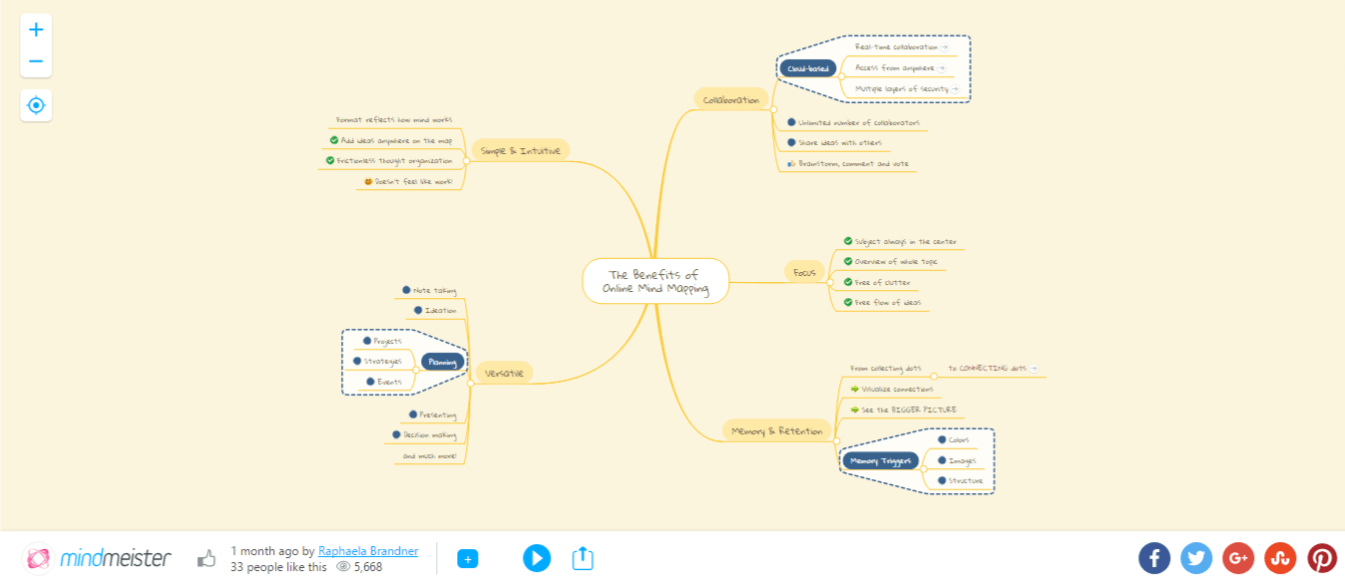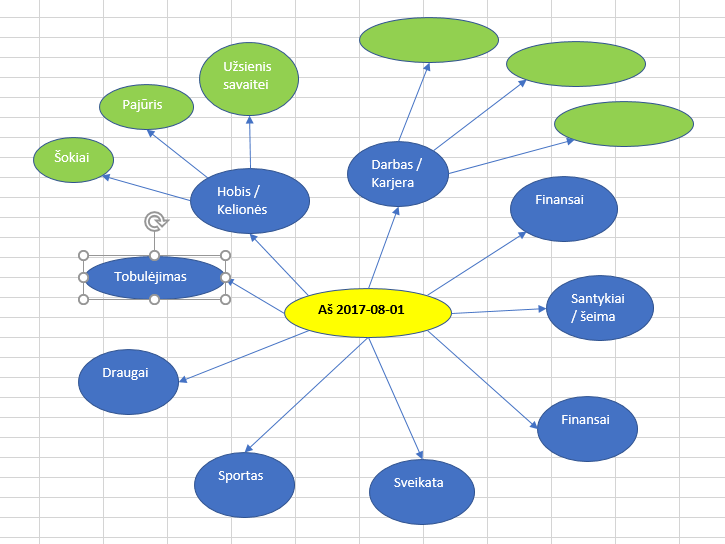Mind map is a great way to reframe the problem - to define a keyword and find as many directly related visual links as possible. Especially if your memory is visual - you remember what you see better than what you hear or feel.
A mind map helps you to organise and reorganise your thoughts. This method can be used alone and in groups.
A mind map is a diagram that is used to show words, tasks and other things related to or around a word or idea. The diagram is used to create, organise and classify ideas and to present them visually. It can also help in research, organisation, problem solving, decision making and writing.
By presenting relationships in a radial rather than linear fashion, the diagram encourages ideas to be considered at every point in the organisation, without the need to develop a suitable framework to work within in advance.
The oldest known mind map to date is that of Porphyry, the famous 3rd century thinker who graphically represented Aristotle's conceptual categories.
Items are grouped intuitively according to the importance of the concepts and organised into clusters, branches or areas.


All mind maps have four main features:
- Structure - a map represents information arranged the way you think about it.
- Key words - focus on the key points you want to express and how they affect your thoughts.
- Associations - find links, connections and relationships between disconnected pieces of information. These links provide more opportunities.
- Grouping - the structure of the map depends on how your mind groups thoughts. A mind map stimulates thinking.
Basics of structure:
- Start in the middle, writing down the topic.
- Use different colours, fonts, symbols, codes and images on your map.
- Choose the words you want to use and write them in upper or lower case.
- Each word/picture must be on a different line.
- The lines must be connected to the central image. The central lines should be thicker, structured and clear. They shall be thinner away from the centre.
- Use colours as a kind of code.
- Create your own style on your map.
- Show and highlight associations.
- Try to be clear.
What is the use of a mind map?
- The meetings bring participants closer together.
- Improving the group's systems thinking.
- The memory of the group or what was discussed is recorded.